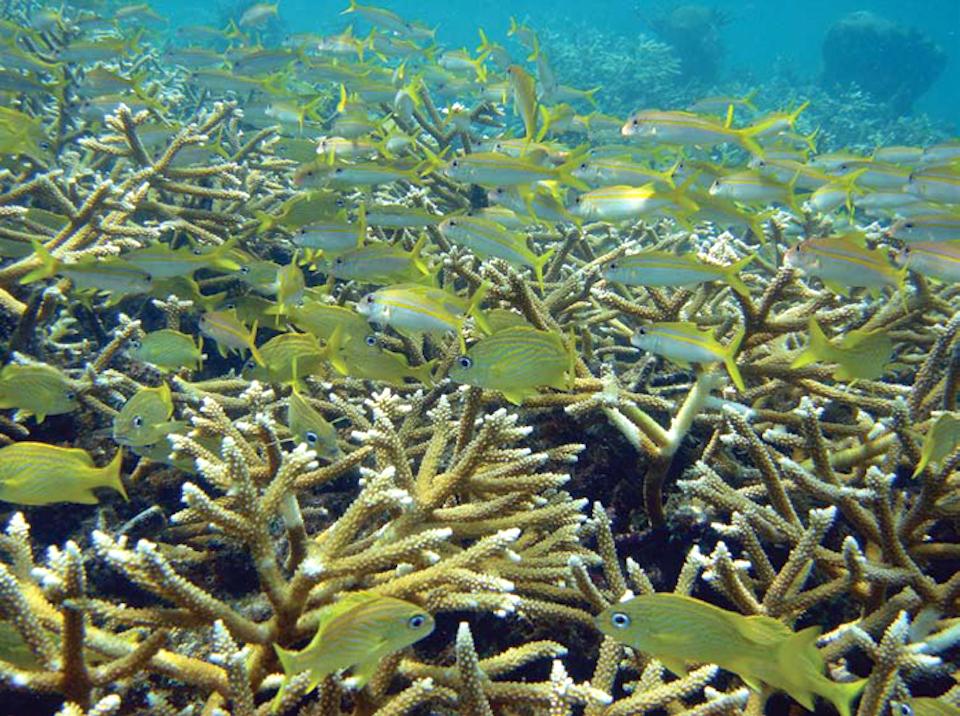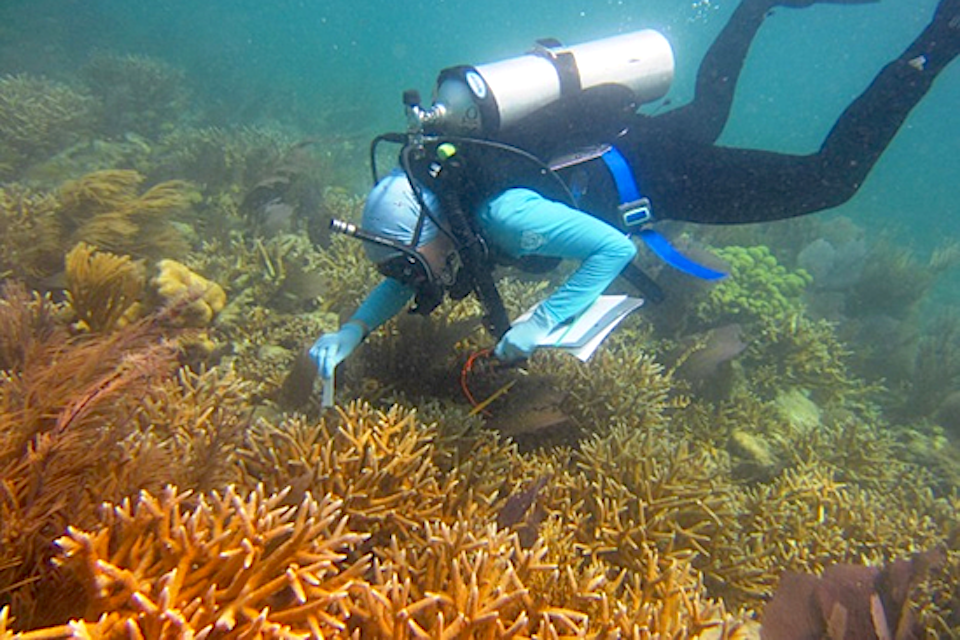
Research indicates an aggressive transplanting program might help staghorn corals survive/NOAA
In the watery world of national parks that touch the Caribbean Sea and the Straits of Florida, staghorn corals add some height to reefs. Their outstretched arms rise from the reefs, often mimicking elk or deer antlers to onlookers with some imagination. But since the 1970s more than 95 percent of these distinctive corals have died, and fears that they would vanish were growing. Now, though, research indicates that a vigorous transplanting initiative possibly could help recover the species.
The research is based on reef restoration projects in the Florida Keys National Marine Sanctuary that borders Dry Tortugas National Park.
Staghorn coral can form dense groups called “thickets” in very shallow water, according to the National Oceanic and Atmospheric Administration. These provide important habitat for other reef animals, especially fish. The coral's range included Dry Tortugas, Virgin Islands National Park, Buck Island Reef National Monument, Everglades National Park, and Biscayne National Park.
Staghorn coral used to be a dominant coral on Caribbean reefs and was so abundant that an entire reef zone is named for it. Beginning in the 1980s, the staghorn coral population declined 97 percent from white band disease. This disease kills the coral’s tissues. Populations appear to consist mostly of isolated colonies or small groups of colonies compared to the vast thickets once prominent throughout its range, with thickets still a prominent feature at only a handful of known locations. Successful reproduction is very rare, so it is hard for staghorn coral populations to increase. -- NOAA
Today staghorn coral populations are listed as "threatened" under the Endangered Species Act. In 2006, NOAA initiated a recovery plan. A central part of this plan is outplanting, in which corals are cultivated in a protected area before being transplanted to the restoration site.

Marine biologists have been studying staghorn reefs at Dry Tortugas National Park/NOAA
While outplanting efforts have been in place for many years, only recently has enough time passed to analyze their long-term potential. Now, Matthew Ware of Florida State University and colleagues have applied photographic monitoring and in-person measurements to assess 2,419 staghorn coral colonies outplanted to 20 different sites in the Florida Keys between 2007 and 2013 by the Coral Restoration Project.
The analysis revealed that survivorship--the percentage of colonies containing living tissue--was high for the first two years after outplanting, but declined in subsequent years. The researchers used statistical modeling to predict future survivorship, finding that 0 to 10 percent of the colonies would survive seven years post-outplanting. This means that large numbers of colonies need to be outplanted to start, so ecologically relevant numbers survive longer-term. Coral growth rates were similar to the wild population.
The authors acknowledge some limitations of their analysis, including a lack of comparison to natural populations at outplant sites, differences in colony numbers and outplant strategies among sites, and low sample sizes for some years.
Still, the findings suggest that outplanting could help restore staghorn coral populations by protecting against local extinction and maintaining genetic diversity in the wild. Meanwhile, the same major stressors that have plagued these corals over the last few decades--disease and bleaching, both related to global warming--remain. The new findings support NOAA conclusions that mitigating these stressors is needed to achieve full, long-term recovery.



Add comment